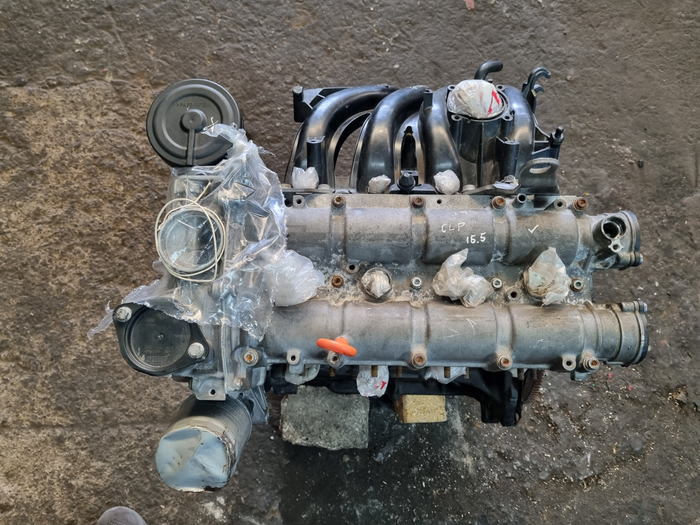Choose a cost-effective clp engine for industrial applications.
Choose a cost-effective clp engine for industrial applications.
Blog Article
The Function of a Clp Engine in Revolutionizing Engine Efficiency and Sustainability
The arrival of CLP engine technology presents a crucial moment in the automobile market, where efficiency and sustainability merge in extraordinary means. By maximizing burning procedures and enabling for vibrant adjustments in compression proportions, these engines not just assure boosted gas performance and decreased exhausts however additionally obstacle conventional design standards.
Understanding CLP Engine Technology
As the vehicle industry consistently looks for cutting-edge solutions to enhance effectiveness and efficiency, understanding CLP engine technology becomes critical. The term CLP represents Compression-Low Stress, a cutting-edge engine design that focuses on maximizing burning processes and reducing exhausts. This innovation operates by keeping a low-pressure setting within the burning chamber, which facilitates a more full gas burn and minimizes unburned hydrocarbons.
Among the key features of CLP engine innovation is its ability to adjust the compression ratio dynamically. This versatility permits the engine to run successfully throughout numerous driving problems, enhancing gas economy while at the same time enhancing power outcome. Furthermore, CLP engines utilize advanced materials and design principles to decrease weight and thermal losses, additionally adding to total effectiveness.
Moreover, the combination of digital control systems plays an essential function in managing the engine's performance parameters. These systems make it possible for real-time modifications to ignition timing and gas injection, enhancing combustion for both power and effectiveness. By recognizing CLP engine innovation, stakeholders in the automobile industry can better appreciate its potential in driving the future of engine design, performance, and sustainability.
Efficiency Enhancements Offered
CLP engine innovation delivers substantial performance improvements that establish it aside from traditional engine designs. Among the key advantages of CLP engines is their capacity to operate effectively across a wider variety of speeds and loads. This versatility equates right into enhanced torque shipment and acceleration, giving a more receptive driving experience.
In addition, the innovative burning process utilized in CLP engines optimizes fuel-air mixing, bring about greater thermal effectiveness. This enhancement not only takes full advantage of power result but additionally minimizes power loss, resulting in an engine that does much better under various conditions.
Moreover, the modular design of CLP engines permits simpler assimilation with crossbreed systems, amplifying their efficiency capacity - clp engine. This versatility makes it possible for producers to develop automobiles that provide to customer needs without giving up dexterity or power
The accuracy engineering entailed in CLP technology additionally adds to decrease friction and wear, improving engine longevity and reducing the frequency of upkeep. Generally, these performance improvements position CLP engines as a leading option in the pursuit of high-performance, reputable, and flexible engine remedies.
Environmental Advantages of CLP Engines
One of the most compelling advantages of CLP engines exists in their environmental advantages, which are significantly crucial in today's automotive landscape. These engines are designed to enhance gas effectiveness, substantially decreasing carbon discharges contrasted to conventional burning engines. By using innovative combustion strategies and innovative products, CLP engines promote cleaner exhaust results, contributing to enhanced air top quality.
Furthermore, the decrease in fuel usage not just leads to reduce greenhouse gas emissions however additionally conserves useful all-natural resources. As fossil gas gets dwindle, the change in the direction of CLP technology represents a critical relocation in the direction of sustainability. The engines are frequently compatible with different fuels, even more boosting their ecological appeal and enabling for a varied power profile.
Furthermore, the lightweight style of CLP engines aids lower automobile weight, which subsequently lowers the energy required for propulsion. This results in lower operational energy usage and a decreased ecological impact. In summary, CLP engines stand at the forefront of efforts to alleviate environment modification and advertise sustainable methods in the vehicle market, personifying a future where efficiency and ecological duty are not equally special.
Contrast With Conventional Engines
While conventional engines have lengthy controlled the vehicle industry, the intro of CLP modern technology provides a significant change in performance and efficiency. Typical interior combustion engines largely depend on fuel burning, which not only restricts thermal effectiveness but additionally contributes to greater discharges. On the other hand, CLP engines use sophisticated thermal management and an unique burning process, boosting internet gas effectiveness and significantly reducing greenhouse gas exhausts.
Additionally, conventional engines operate set power curves, which can hinder efficiency in varying driving problems. CLP engines, however, are developed to adjust their efficiency dynamically, giving optimum power delivery based on real-time needs. This adaptability causes improved velocity, responsiveness, and overall driving experience.
Maintenance additionally varies significantly; typical engines typically call for frequent oil modifications and part replacements due to damage. clp engine. CLP engines, with less moving parts, assure reduced maintenance demands and longer functional life-spans

Future Prospects and Innovations
As the automotive read landscape develops, the future of engine innovation is increasingly concentrated on innovations that boost performance and sustainability. The Clp engine, with its unique style and functional efficiencies, is positioned to play an essential function in this makeover. Future advancements may entail improvements in materials scientific research, allowing the construction of lighter and extra resilient components, therefore decreasing total car weight and enhancing gas efficiency.
In addition, the integration of expert system and device understanding into engine monitoring systems is expected to maximize performance dynamically, permitting for real-time modifications based upon driving problems. These advancements can further lessen emissions and enhance power use.
Additionally, study into alternate gas, including hydrogen and biofuels, provides exciting opportunities for Clp engines, aligning performance with environmentally friendly efforts. clp engine. As governing structures become stricter, the fostering of such modern technologies will be important in attaining sustainability objectives without jeopardizing power
Final Thought

Report this page